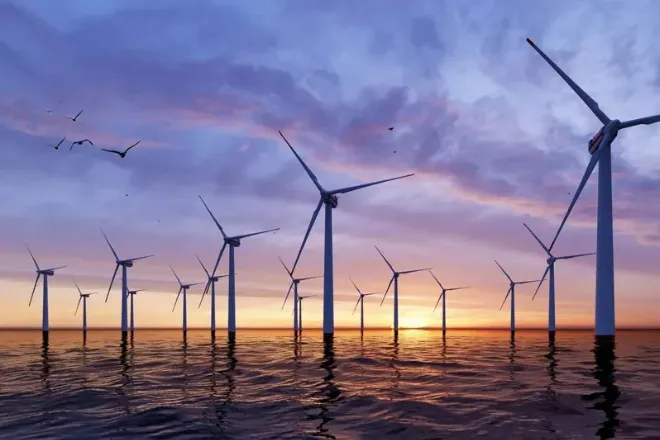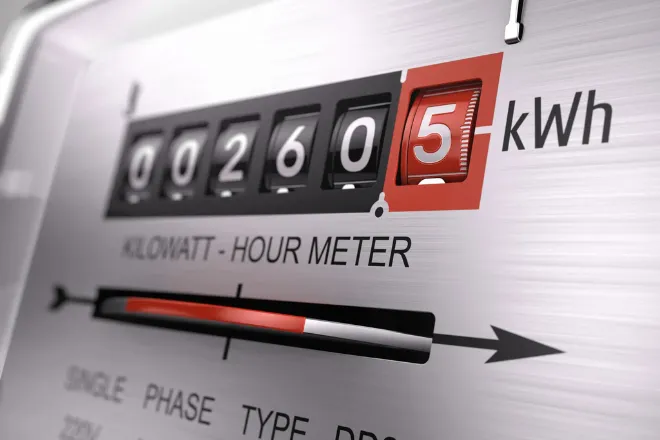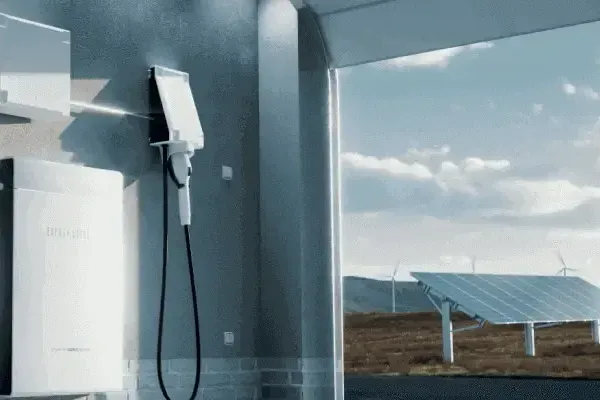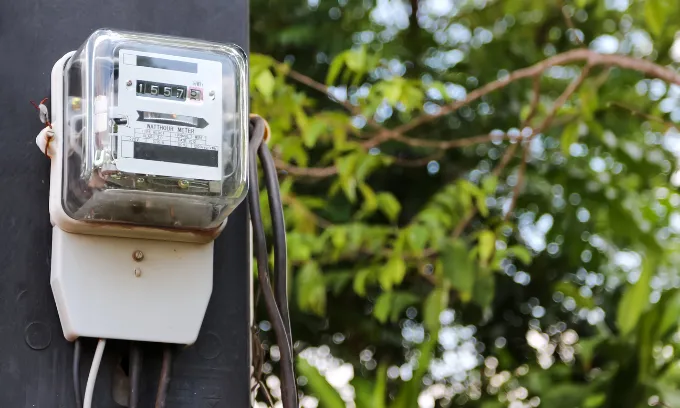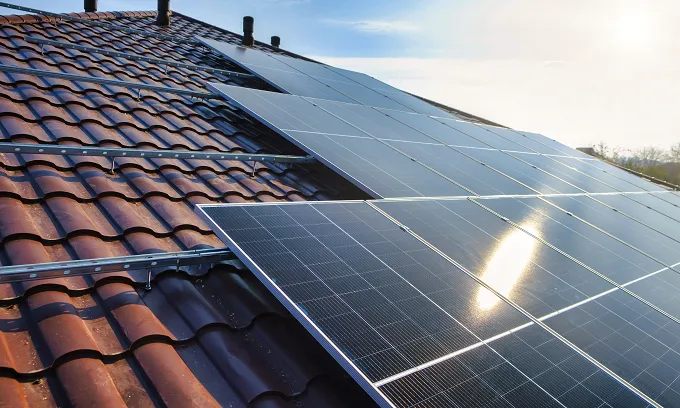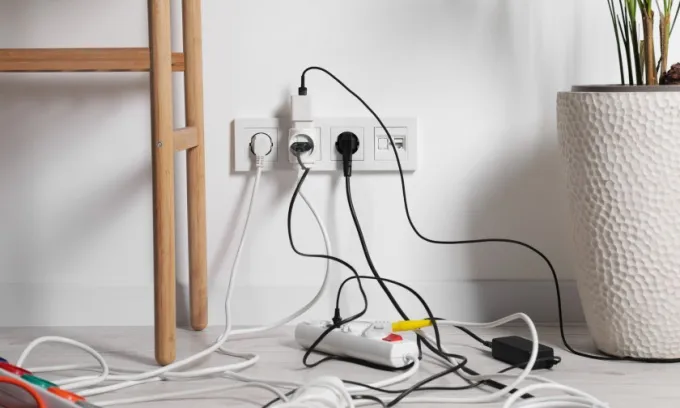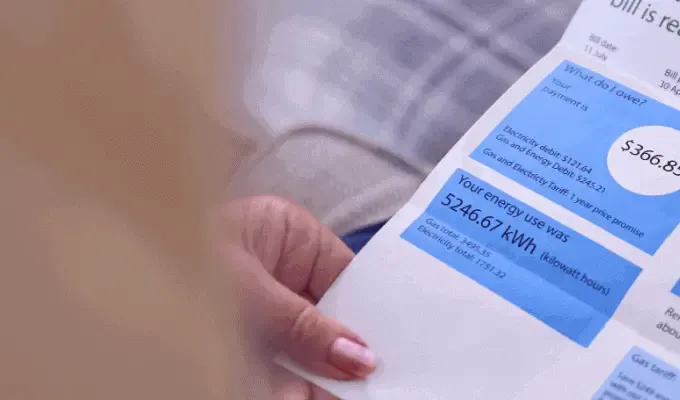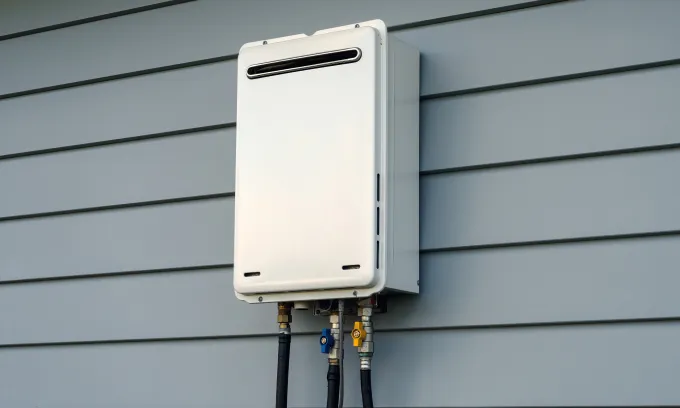How energy in NSW works
The New South Wales (NSW) energy market covers two energy sources — electricity and gas.
If you want electricity or gas, you’ll need to choose an energy provider and a plan. An energy provider is a middleman that buys electricity or gas from the wholesale energy market, reselling it to customers like you. An energy plan outlines how much you’re charged for your electricity or gas use.
An energy provider resells energy, while a distributor transports it to customers’ homes. Distributors are responsible for supplying electricity or gas and maintaining the powerlines, pipes and meters that transport energy.
Because the entire NSW energy market is deregulated, providers can sell plans with prices and discounts they set. It also gives you the freedom to pick both plan and provider.
Deregulation has fuelled fierce competition between NSW's electricity and gas providers. Because of this, comparing energy plans in Sydney or the rest of NSW is free, easy and can save you hundreds of dollars if you haven’t shopped around for a while.
Electricity in NSW explained
Electricity distributors in NSW
In NSW, electricity is supplied by three distributors.
- Ausgrid: Covers Sydney, Central Coast and the Hunter Valley.
- Endeavour Energy: Covers Greater Western Sydney, Blue Mountains, Southern Highlands, Illawarra and the South Coast region.
- Essential Energy: Covers regional and rural areas of NSW.
It’s important to know your distributor because they are the first point of contact in an emergency or power outage.
Electricity plans in NSW
Two categories of electricity plans are offered — ‘market offers’ and ‘standing offers’. Every plan charges you based on your actual electricity use, which is measured in kilowatt hours (kWh).
Market and standing offers show an estimated annual price calculated from a general annual usage estimate. The Australian Energy Regulator (AER) is in charge of setting general annual usage figures.
For example, the annual usage estimate in the Ausgrid network is 3,900 kWh a year. That means annual usage estimates differ between distributors.
Market offers
Market offers are plans set by providers, with competitive rates (prices) and attractive discounts.
Things to know:
- Market offers have a fixed contract length (usually twelve months) before expiring.
- Most market offers are variable rate plans, meaning providers can increase their rates before they expire.
- A fixed rate plan freezes rates during the length of its contract, but they are rare.
Standing offers
Standing offers, also called the default market offer (DMO) in NSW, QLD and SA, follow the NSW reference price set by the Australian Energy Regulator (AER) every July 1st.
Standing offers ensure Aussies who don’t shop around pay a fair price for electricity. They’re also a benchmark for comparing other market offers. Price differences are shown as a percentage (%) above or below the reference price.
Things to know:
- If you haven’t switched electricity plans for a while, the market offer you were on (if any) has likely expired. Your provider will then move you to its standing offer.
- If you’re on a standing offer, you’re likely paying the maximum a retailer can charge you. We strongly encourage switching to save hundreds of dollars.
- Market offers can be priced more than standing offers, but this is uncommon.
- There is no contract length, so you can stay on a plan indefinitely.
- Standing offers don’t offer discounts.
The cheapest electricity plans in NSW
Below are the current cheapest single-rate electricity plans in our database on the Ausgrid network in Sydney, NSW.
Provider | Plan name | Est. annual cost (inc. all discounts) | Est. annual cost (ex. conditional discounts) | Reference price comparison (Basic Plan Information) |
|---|---|---|---|---|
Kogan | Kogan Energy for current FIRST members | $1,491 | $1,591 | 19% less |
GloBird Energy | BOOST Residential (Flat Rate)-Ausgrid | $1,518 | $1,518 | 23% less |
Momentum Energy | Warm Welcome | $1,548 | $1,548 | 21% less |
Sumo | Sumo Sunrise | $1,554 | $1,554 | 21% less |
Electricity prices and rates in NSW
Every electricity plan in NSW comes with two charges — ‘supply charges’ and ‘usage charges’, which can be found on your power bill.
- Supply charges: Supply charges are a fixed cost (in c/day) you pay to remain connected to the grid.
- Usage charges: A variable cost for every kWh of electricity you use.
Tariffs are pricing models providers use to set a plan’s usage charges (in c/kWh). In NSW, there are three types:
- Single rate: Electricity rates remain the same regardless of the time of day.
- Time of use (ToU): Different rates depending on when you use electricity — peak, off-peak, and shoulder periods. To be eligible for a ToU tariff, you’ll need to have a smart meter installed.
- Controlled load (CL): Energy-hungry appliances (i.e. hot water systems) are metered separately from your home. To be eligible for a CL tariff, you’ll need to have a separate CL meter installed or a smart meter. If you have neither, you would have to ask your distributor (the grid) for one.
Market offers may come with discounts for a plan’s contract length or benefit period, such as:
- Conditional discounts: Discounts that apply if specific conditions are met (e.g. pay on time discounts). Providers may include them in the advertised price of a plan, which can be misleading. If you don’t meet the criteria, you won’t get the discount.
- Dual fuel discount: You may be entitled to a ‘dual fuel’ discount if you bundle electricity and gas plans from the same provider. This is a type of conditional discount. Keep in mind that a dual fuel discount doesn’t guarantee the cheapest price for both. In fact, you could be saving more by having different providers supply you with electricity and gas. First work out if having two separate providers saves you more than the dual fuel discount.
- Guaranteed discounts: A discount applying to all customers — this discount is usually shown as a percentage off a plan’s advertised price and is typically active for one year.
- Reward programs: Some plans offer free access to reward programs, giving you points for every dollar spent on power bills. These points can be exchanged for rewards (i.e. movie tickets) through the program’s online portal.
All of these features can be found on a plan’s energy fact sheet, which is called Basic Product Information Sheets (BPIDs) in NSW, QLD and SA.
On the results page of Canstar’s comparison platform, you can access a plan’s BPID by clicking on the ‘Basic Plan Information’ prompt.
How to find the best energy plans in NSW
There's no one 'best' energy plan, as different households have vastly different energy needs. But knowing how to compare plans, and which features or plan types will benefit you the most, can help you find the best deal.
For electricity, it may seem as easy as choosing the market offer that’s cheapest compared to the DMO. In reality, you must really understand what you’re looking for.
How much electricity you use
This will determine if a plan with cheaper supply or usage charges is more affordable.
- If your home uses little electricity, a plan with lower supply charges will save you more money.
- If your home uses a lot of electricity, a plan with lower usage charges will be more cost-effective.
When you use the most electricity
Knowing when your home uses the most electricity will also help you choose a cheaper tariff:
- If you use more electricity during peak hours, a single rate tariff will be cheaper than a ToU tariff.
- If you use more electricity during off-peak hours, a ToU tariff will be cheaper than a single rate tariff.
- If you have a power-intensive appliance (e.g. pool pump), a CL tariff can save you more money if you’re willing to shorten its operating hours.
Be wary of hidden fees
Energy plans can hide additional fees (e.g. a connection or a disconnection fee). Make sure you’re aware of them before switching to another plan.
Gas in NSW explained
Gas distributors in NSW
In NSW, gas is supplied by four distributors.
- Central Ranges System: Between Dubbo and Tamworth.
- Jemena Gas Networks: Sydney, Newcastle, the Central Coast and Wollongong, Central West, Central Tablelands, South Western, Southern Tablelands, Riverina and Southern Highlands.
- Wagga Wagga Gas Distribution Network (AGN): Wagga Wagga, surrounding suburbs and parts of southern NSW.
- ActewAGL: Palerang (Bungendore) and Queanbeyan.
Generally, you’ll only contact your gas distributor if you need to:
- Establish a gas connection at home.
- If there is a gas outage.
- If you need to submit a manual gas meter read you've done yourself.
Gas plans in NSW
Just like with electricity, there are two types of natural gas contracts — standard and market.
Instead of kWh, providers will bill you based on your actual gas usage, measured in megajoules (MJ).
Price estimates are based on a general annual gas usage (i.e. 18,800 MJ per year). Canstar calculates this figure based on the average advertised usage from a selection of retailers.
Market contracts
Market contract prices are chosen by the retailers. They often include discounts and can help customers reduce costs, provided the conditions are met.
Things to note:
- Market contracts can have fixed or variable usage rates.
- Market contracts can cost more than standing contracts, but this is uncommon.
- Variable usage rates can change frequently.
- You should compare variable plan pricing every 12 months.
Standing contracts
Standing contracts are regulated by the NSW Government and are designed to give customers a fair gas price.
Things to note:
- They typically represent the highest price a gas provider will charge you for your gas use.
- Standing contracts have no discounts.
- Standing contracts are indefinite, so you can stay on one as long as you want.
The cheapest electricity plans in NSW
Below are the current cheapest single-rate gas plans in our database on the Jemena network in Sydney, NSW.
Provider | Plan name | Est. annual cost (inc. all discounts) | Est. annual cost (ex. conditional discounts) | Basic Plan Information |
|---|---|---|---|---|
Energy Locals | Gas Saver | $862 | $862 | |
Alinta Energy | HomeDeal Select | $869 | $869 | |
Powershop Australia | Power House | $913 | $1,013 | |
CovaU | Freedom | $922 | $922 |
Gas prices and rates in NSW
Gas plans are structured similarly to electricity plans. The two key components of your gas bill are usage charges and supply charges:
- Supply charges: A daily fee (in c/day) for being connected to the gas network regardless of how much gas you use (if any).
- Usage charges: The usage rate applies to gas that you actually use and is measured in cents per megajoule (MJ).
Their usage charges are priced according to two tariffs — single rate and block rate tariffs:
- Single rate tariff: Plans that charge you the same rate for gas usage throughout the day.
- Block rate tariff: Customers are charged different rates depending on the quantity of gas used. For gas, you’re typically charged a lower rate for each block of usage. For example, a customer may be charged 4c/MJ for the first 20 MJ used, 2.7c for the next 20 MJ of usage, and 2.5c/MJ for the rest.
Depending on the gas plan, there may be additional discounts on offer, such as for paying on time or by direct debit.
All this information can be found on a plan’s gas fact sheet. You can also access each plan’s fact sheet by clicking on the ‘Basic Plan Information’ prompt below each plan name.
How to find the best gas plans in NSW
As with electricity, finding the right gas plan comes down to knowing your usage and checking the fine print before committing.
Knowing how you use gas
Similar to electricity plans, gas plans with lower supply charges are cheaper for homes that use less gas, while gas plans with lower usage charges for homes that use a lot of gas.
The same goes for tariff types:
- If your home uses little gas, a single rate tariff is the cheaper option.
- If your home uses a lot of gas, a block rate tariff is more affordable.
Understanding gas discounts and hidden fees
Your gas plan may include discounts for meeting specific requirements, such as paying on time or by direct debit. However, make sure these discounts aren't hiding higher standard plan rates.
You should also check your plan documents to see if additional fees apply, such as moving house, paper billing or credit card fees.
Solar in NSW explained
Unlike electricity or gas, you don’t pay for a plan that supplies your home with solar power.
Instead, your electricity provider pays you indirectly for your excess solar (a feed-in-tariff). Here’s how it works.
Solar feed in tariffs in NSW
A solar feed in tariff (FiT) credits you (in c/kWh) for excess solar exported from your rooftop solar system to the grid.
NSW was the second Australian state to surpass a million rooftop solar installations in 2024.
Sun tax in NSW
The sun tax, also known as a two-way rooftop solar tariff, charges you for exporting solar to the grid during peak periods
Choosing the right NSW solar feed in tariff (FiT)
It’s not as simple as choosing the highest solar FiT. Here are some other things to consider:
- A higher solar FiT could be hiding higher usage and supply charges — you may end up paying more than you’re credited from your FiT.
- Some solar FiTs offer higher rates for a capped amount of exported solar before decreasing to a lower rate each day (e.g. 10c/kWh for the first 10kWh per day, 5c/kWh after).
How to switch energy plans in NSW
Now that you understand how the market works, it’s time to make the switch.
Step 1: Check your eligibility to switch plans
Most customers should be able to switch their energy providers, whether they rent or own. However, there are instances where it may not be possible to choose your plan or provider.
Electricity
- Embedded networks: You may be living in an embedded network if you live in an apartment building, caravan park or retirement village, which means the site owner buys energy in bulk to sell on to residents. This can make switching providers a long and tricky process because not all providers will agree to sell you energy. Contact the site manager or body corporate to find out if you are part of an embedded network.
- Your landlord pays the bills: If your energy bill is included in your rent, there is a chance that you can’t switch providers. This is because your landlord is the one whose name is on the bill. This will likely be written in your rental agreement.
Gas
- Check if your home is connected to a gas main: For those wanting to switch to gas for the first time, you need to make sure your home has a gas connection. If you’re not connected to a gas mains, contact the gas distributor in your area to assist. Do note that a gas connection may attract a fee.
- If your home is not located close to a gas mains: Liquefied petroleum gas (LPG) may be an alternative for you. Keep in mind that natural gas-powered appliances cannot run on LPG.
Step 2: Gather your current bill
Before comparing plans, have your most recent bill handy to compare against other plans. Understanding your current plan’s discounts and rates is the first step to finding a plan that is a better value.
Your recent bills will also provide an estimate of how much electricity or gas you use throughout the year. It is important to understand your energy needs before choosing a new plan.
Step 3: Compare energy plans based on price
Using Canstar’s fuss-free comparison platform, you can sort plans available in your postcode.
You can also filter these results for your specific needs:
- Bill details
- Billing periods
The results will provide you with an estimated annual cost and easy access to a plan’s fact sheet.
Step 4: Check tariff type, FiTs and contract terms
Understanding how your household uses energy is how you will know how you can benefit from different plans, tariff types and FiTs.
Carefully weigh your options and don’t rush into a plan without understanding the contract terms and conditions on their fact sheets.
Step 5: Review your current plan’s exit fees
Check your current plan’s fine print or fact sheet for any exit fees. There may be fees for termination or disconnection that may apply to you. Any fees will usually be added to your final bill.
Step 6: Sign up with your new provider
Follow Canstar’s energy comparison platform through to your new provider’s website. Keep in mind that switching will require a few extra steps:
Electricity
- You will need to provide your National Meter Identifier (NMI), which can be found on your electricity bills. This is how your provider knows which meter is yours.
- Your new provider may request a credit or identification check before confirming your plan.
- There is no need to contact your old provider and advise them of the switch. Your new provider will handle that for you.
- There is usually a 10-day cooling-off period after you sign up for your new plan. This gives you time to thoroughly read through your new plan’s welcome pack or change your mind.
- Your electricity supply should not be interrupted during the switching process.
Gas
- You will need to provide your DPI (Delivery Point Identifier), which can be found on your gas bill. This is how your provider knows which meter is yours.
- Your new provider may request a credit or identification check before confirming your plan.
- There is no need to contact your old provider and advise them of the switch. Your new provider will handle that for you.
- A final meter reading will be conducted by your old provider to determine your final bill. The time taken depends on when your last meter read was and how frequent your billing cycle is.
- There is usually a 10-day cooling-off period after you sign up for your new plan. This gives you time to read through your new plan’s welcome pack before changing your mind.
- Your gas supply should not be interrupted during the switch.
Step 7: Review your plan as needed
There are a few times a year when it may be worth reviewing your plan. Keeping engaged with the market is the best way to ensure you have the best value plan.
- When your contract expires: Most providers will change your market offer plan (or market offer for gas) to their standing offer (standing contract for gas) once your initial contract has expired. This means your bill could increase dramatically.
- July 1 (only for electricity): When the Default Market Offer (DMO) and Victorian Default Offer (VDO) change every year on July 1, your electricity provider will likely change its rates.
- If your bill is too expensive: Those on a variable rate plan may find their provider changing their rates multiple times throughout the year. Customers may find themselves paying much more for their plan than when they signed up.
If you sign up for our email newsletter, we’ll help remind you when it's time to review your energy plan again.
NSW energy rebates and concessions
If you’re struggling to pay for electricity or gas, you may be eligible for rebates and concessions from the NSW state government.
Energy Accounts Payment Assistance (EAPA)
- Electricity bills only
- Available to households experiencing financial hardship
- Rebate varies based on application
- Customers can apply online via MyService NSW, or in person/over the phone with a non-Government EAPA provider.
Low Income Household Rebate
- Electricity bills only
- Available to eligible pensioners, seniors, veterans and households struggling to pay electricity bills
- $285 annually, or $313.50 for embedded network customers
- Apply via your electricity provider.
Gas Rebate
- Gas bills only
- Available to pensioners, veterans and low-income customers
- $121 annually
- Apply via your gas provider.
Seniors Rebate
- Electricity bills only
- Available to self-funded retirees
- $200 annually
- Apply online via the MyService NSW portal or in person at Service NSW centres.
Family Energy Rebate
- Electricity bills only
- Available to low-income families
- Up to $180 annually
- Apply by completing a Family Energy Rebate application online or send to NSW Energy Rebates PO Box.
Life Support Rebate
- Electricity bills only
- Available to customers who require life support
- Up to $1,343.20 per retail household, or $1,477.52 per embedded network household, per financial year
- Apply by submitting a Life Support Rebate form with your energy provider.
Medical Energy Rebate
- Electricity bills only
- Available to customers who are unable to self-regulate their body temperature
- Up to $285 per retail household, or $313.50 per embedded network household, per year
- Apply by submitting a Medical Energy Rebate form with your energy provider.
*For more eligibility information, visit the Service NSW’s official website.



